★★
“Nun-descript.”
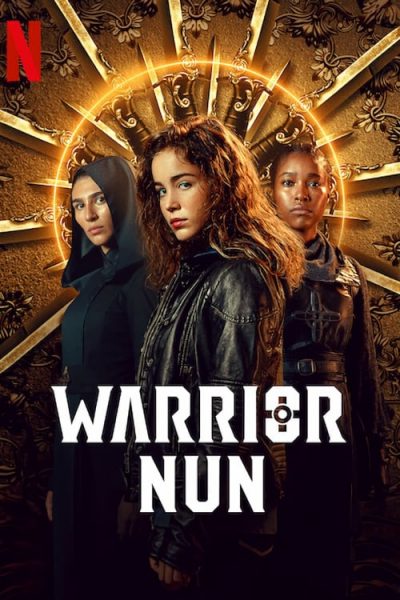 There’s probably a decent movie in here. An interesting premise, occupying the nexus where religion and science cross, and some very effective hand-to-hand action sequences, would potentially have made for a decent 90 minutes of fun. The problem is, this actually runs for 10 x forty-minute episodes, and the result is stuffed so full of padding, that it could be used as a sofa. The nuns of the title are members of the Order of the Cruciform Sword, a group which has been fighting demonic entities for centuries. Chief among them is the bearer of the Halo, a divine relic which bestows its owner with great powers, including rapid healing and the ability to phase through solid objects.
There’s probably a decent movie in here. An interesting premise, occupying the nexus where religion and science cross, and some very effective hand-to-hand action sequences, would potentially have made for a decent 90 minutes of fun. The problem is, this actually runs for 10 x forty-minute episodes, and the result is stuffed so full of padding, that it could be used as a sofa. The nuns of the title are members of the Order of the Cruciform Sword, a group which has been fighting demonic entities for centuries. Chief among them is the bearer of the Halo, a divine relic which bestows its owner with great powers, including rapid healing and the ability to phase through solid objects.
When the current bearer of the Halo is killed in battle, it is embedded into another host. This is the corpse of Ava (Silva), a quadriplegic orphan who just happens to be in the wrong (or right, depending on your point of view) place at the wrong (or right, again) time. The Halo resurrects Ava and fixes her up, physically; but she’s certainly not mentally or spiritually prepared initially to become a nun and join the sisters of the OCS. However, her wants and needs are secondary to those of the Catholic Church, and there’s also high-tech company ARQ-Tech. Its CEO, Jillian Salvius. has built a trans-dimensional portal, using “divinium”, a mystical substance that can also be used to create weapons and armour for use by the OCS.
The above isn’t the problem. The issue is all the other stuff which gets added to it. For example, after her resurrection, Ava ends up becoming part of some kind of upper-class squatters’ movement, who jet-set around Europe, staying in unoccupied houses. I have no clue what the purpose of this was supposed to be. And, worse, neither does the show. The young, homeless hipsters basically vanish without trace in the second half, as if the writers realized it was a bad idea to begin with. Similarly, there’s an entire episode in which Ava and OCS colleague Shotgun Mary faff around the Spanish countryside for the duration. Really, after episode 1, you could skip the next five, while we go through the whole “reluctant heroine” thing we’ve seen all too often before.
We could have done with much less of all that, and more… Oh, I dunno: fighting demons, maybe? The action aspects generally seem underplayed, until a final mission where Ava and a small team break into the vaults beneath the Vatican, seeking a relic that… Well, let’s just say, doesn’t turn out to be quite what they expected. But until this gets under way, you might as well have it on in the background, and only pay attention when you hear the sound of fighting [here’s an example of the impressive quality I mean there]. And do not expect anything like a tidy ending either, the show instead delivering the most brutally abrupt of cliffhangers. But it probably says a lot that my reaction to it was mostly apathy.
Creator: Simon Barry
Star: Alba Baptista, Toya Turner, Thekla Reuten, Lorena Andrea





 Not sure I’ve ever read a book with three authors before, though Amazon omit Noe from the list given on Goodreads. This “novel by committee” might explain some of the problems with this, and its failure to mesh the two strands in any effective way. It’s a pity, as it starts off in entirely blistering fashion, with the arrival on Earth of the Syndicate, an extra-terrestrial invading army. We knew they were coming, so humanity’s forces take them on, in a massive and spectacular battle at their landing site in Mexico. It doesn’t go well for us, thanks to the attacker’s vastly superior technology. Survivors are few, but include Marines Quinn and Giovanni.
Not sure I’ve ever read a book with three authors before, though Amazon omit Noe from the list given on Goodreads. This “novel by committee” might explain some of the problems with this, and its failure to mesh the two strands in any effective way. It’s a pity, as it starts off in entirely blistering fashion, with the arrival on Earth of the Syndicate, an extra-terrestrial invading army. We knew they were coming, so humanity’s forces take them on, in a massive and spectacular battle at their landing site in Mexico. It doesn’t go well for us, thanks to the attacker’s vastly superior technology. Survivors are few, but include Marines Quinn and Giovanni. Or, perhaps: “What Blade Runner would have been like, if android Roy Batty was a good guy.” For this appears to be a mash-up of elements from that and Battle Angel Alita. While preceding the film version of the latter, it does seem to borrow elements of the manga, not least in its depiction of a future society where there is a strict, and basically vertical, division between the haves and the have-nots. After disease and pollution have pushed society to the brink, the rich and powerful live towards the top of a self-sufficient mega-city, under the control of ice queen Lady Jiru (Ishida) and her “Sodom” cyborg enforcers, leaving everyone else struggling for scraps down below. And leaving is a death sentence, due to the viruses infecting the outside world.
Or, perhaps: “What Blade Runner would have been like, if android Roy Batty was a good guy.” For this appears to be a mash-up of elements from that and Battle Angel Alita. While preceding the film version of the latter, it does seem to borrow elements of the manga, not least in its depiction of a future society where there is a strict, and basically vertical, division between the haves and the have-nots. After disease and pollution have pushed society to the brink, the rich and powerful live towards the top of a self-sufficient mega-city, under the control of ice queen Lady Jiru (Ishida) and her “Sodom” cyborg enforcers, leaving everyone else struggling for scraps down below. And leaving is a death sentence, due to the viruses infecting the outside world. I really must get round to reviewing Wentworth. The Australian women-in-prison drama certainly deserves coverage here, and has provided some of the best television we’ve enjoyed in the 2010’s. I keep intending to do so, but suspect that will now likely have to wait until after the show comes to a conclusion, following its ninth and final season in 2021. In the meantime, however, I do get to review the Turkish remake of the show. If you’ve seen Wentworth, this version is perhaps as unnecessary as any Hollywood remake of a familiar foreign film. Yet there are enough differences – both in story and culture – that I didn’t mind too much.
I really must get round to reviewing Wentworth. The Australian women-in-prison drama certainly deserves coverage here, and has provided some of the best television we’ve enjoyed in the 2010’s. I keep intending to do so, but suspect that will now likely have to wait until after the show comes to a conclusion, following its ninth and final season in 2021. In the meantime, however, I do get to review the Turkish remake of the show. If you’ve seen Wentworth, this version is perhaps as unnecessary as any Hollywood remake of a familiar foreign film. Yet there are enough differences – both in story and culture – that I didn’t mind too much. The life of Jill Conway (Seyfried) is slowly returning to somewhat normal, following her abduction by a serial killer in the Pacific Northwest. She was held in a forest pit, and barely managed to escape with her life. However, the lack of physical evidence and a history of mental health problems, helped cause the authorities not to believe her story. When Jill’s sister Molly vanishes, she’s certain the same killer is responsible, and when the police again fail to take her seriously, begins investigating herself. But when the cops find out this former mental patient is packing heat, Jill becomes a fugitive herself.
The life of Jill Conway (Seyfried) is slowly returning to somewhat normal, following her abduction by a serial killer in the Pacific Northwest. She was held in a forest pit, and barely managed to escape with her life. However, the lack of physical evidence and a history of mental health problems, helped cause the authorities not to believe her story. When Jill’s sister Molly vanishes, she’s certain the same killer is responsible, and when the police again fail to take her seriously, begins investigating herself. But when the cops find out this former mental patient is packing heat, Jill becomes a fugitive herself. I was enormously surprised to see this one pop up on Netflix – it’s not as if the
I was enormously surprised to see this one pop up on Netflix – it’s not as if the  The title is the English translation of “karate,” yet seems oddly appropriate for a film which barely clears the necessary quota of action to qualify for this site. I can’t say I felt my time was wasted, as such. Yet if you’re looking for a plethora of martial arts, you’ll be disappointed, despite the poster and a story which certainly could have gone in a much more action-oriented direction.
The title is the English translation of “karate,” yet seems oddly appropriate for a film which barely clears the necessary quota of action to qualify for this site. I can’t say I felt my time was wasted, as such. Yet if you’re looking for a plethora of martial arts, you’ll be disappointed, despite the poster and a story which certainly could have gone in a much more action-oriented direction. If you thought “Alice in Wonderland was okay, but it really needed more air-ships,” then this book is for you. It’s a steampunk take on Lewis Carroll’s classic tale, set in an alternate universe version of Victorian London. Specifically, 1851, when the renowned Great Exhibition took place in Hyde Park. Though it doesn’t actually feel particularly “alternate”; this angle lives mostly in its trappings, such as people using air-ships to get around, or clockwork cats, rather than in elements necessary to the plot. But that’s okay, because at its core, the story is strong enough to stand on its own.
If you thought “Alice in Wonderland was okay, but it really needed more air-ships,” then this book is for you. It’s a steampunk take on Lewis Carroll’s classic tale, set in an alternate universe version of Victorian London. Specifically, 1851, when the renowned Great Exhibition took place in Hyde Park. Though it doesn’t actually feel particularly “alternate”; this angle lives mostly in its trappings, such as people using air-ships to get around, or clockwork cats, rather than in elements necessary to the plot. But that’s okay, because at its core, the story is strong enough to stand on its own.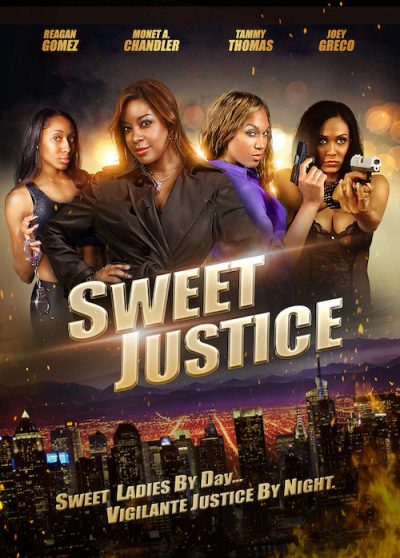 Four women run a charitable agency in Texas, helping single mothers track down and obtain child support payments from deadbeat dads. However, they don’t limit themselves to the simple serving of legal papers. The women adopt a more… hands-on approach, shall we say, first luring their targets in with the promise of sex, then threatening them at gunpoint, to make sure they pay up. For obvious reasons, the cops soon take interest in this string of unusual armed robberies. Meanwhile, the city’s white mayor, is dealing with a domestic crisis of her own, thanks to her daughter having had a child by (gasp!) a black man.
Four women run a charitable agency in Texas, helping single mothers track down and obtain child support payments from deadbeat dads. However, they don’t limit themselves to the simple serving of legal papers. The women adopt a more… hands-on approach, shall we say, first luring their targets in with the promise of sex, then threatening them at gunpoint, to make sure they pay up. For obvious reasons, the cops soon take interest in this string of unusual armed robberies. Meanwhile, the city’s white mayor, is dealing with a domestic crisis of her own, thanks to her daughter having had a child by (gasp!) a black man.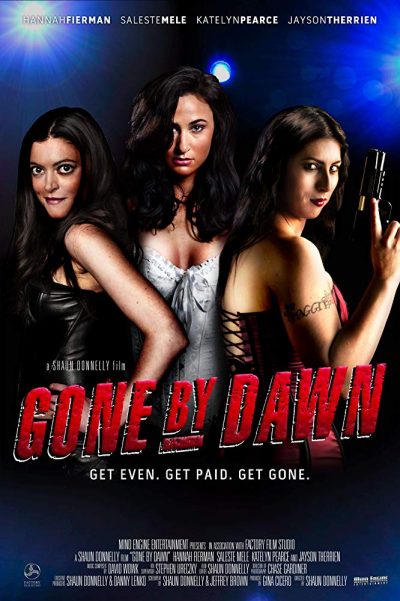 I decided I might as well combine these two into a single review. Having watched them back-to-back, even though made and set three years apart, they felt very much like the continuation of a single story about the same characters. The main one is Roxy (Mele), who is a dancer at a Wisconsin strip-club run by the sleazy Stag (Therrien), mostly as a money-laundering front for local organized crime. When he and his pal rape an employee, Alana (Pearce), Roxy along with the victim and another dancer, Crystal (Fierman), decide to take revenge by robbing Stag. That means getting into the safe in his office where the money is, and he’s not exactly going to give up the combination freely. Still, nothing that a piano-wire garrotte round the testicles can’t solve, surely? Except, as usual in this genre, the heist doesn’t go smoothly. Stag’s office quickly begins to resemble a mortuary, as unwelcome guests need to be handled.
I decided I might as well combine these two into a single review. Having watched them back-to-back, even though made and set three years apart, they felt very much like the continuation of a single story about the same characters. The main one is Roxy (Mele), who is a dancer at a Wisconsin strip-club run by the sleazy Stag (Therrien), mostly as a money-laundering front for local organized crime. When he and his pal rape an employee, Alana (Pearce), Roxy along with the victim and another dancer, Crystal (Fierman), decide to take revenge by robbing Stag. That means getting into the safe in his office where the money is, and he’s not exactly going to give up the combination freely. Still, nothing that a piano-wire garrotte round the testicles can’t solve, surely? Except, as usual in this genre, the heist doesn’t go smoothly. Stag’s office quickly begins to resemble a mortuary, as unwelcome guests need to be handled. I didn’t think the sequel worked as well. While Roxy returns, she has been recast, being now played by Matheis – I’m not sure what happened to Mele. Still, I did laugh when one supporting character greets her with, “You look different!” Oddly, while the first film started with Roxy skipping town, the second sees her back, working at the same venue where she was involved in a multiple homicide. I know strippers are renowned for making poor decisions, but still… It turns out, having absconded with nine hundred grand of the mob’s money isn’t a good idea. They want it back, and to this end, have sent a trio of hired killers, named the Three Bears by Roxy. They’re prepared to do anything, up to and including both kidnapping and murder. But Roxy, along with Jesse (Radzion), a friend of Alana’s, and another dancer, Alura (Laventure), plots to turn the tables on the Three Bears, by robbing their boss.
I didn’t think the sequel worked as well. While Roxy returns, she has been recast, being now played by Matheis – I’m not sure what happened to Mele. Still, I did laugh when one supporting character greets her with, “You look different!” Oddly, while the first film started with Roxy skipping town, the second sees her back, working at the same venue where she was involved in a multiple homicide. I know strippers are renowned for making poor decisions, but still… It turns out, having absconded with nine hundred grand of the mob’s money isn’t a good idea. They want it back, and to this end, have sent a trio of hired killers, named the Three Bears by Roxy. They’re prepared to do anything, up to and including both kidnapping and murder. But Roxy, along with Jesse (Radzion), a friend of Alana’s, and another dancer, Alura (Laventure), plots to turn the tables on the Three Bears, by robbing their boss.